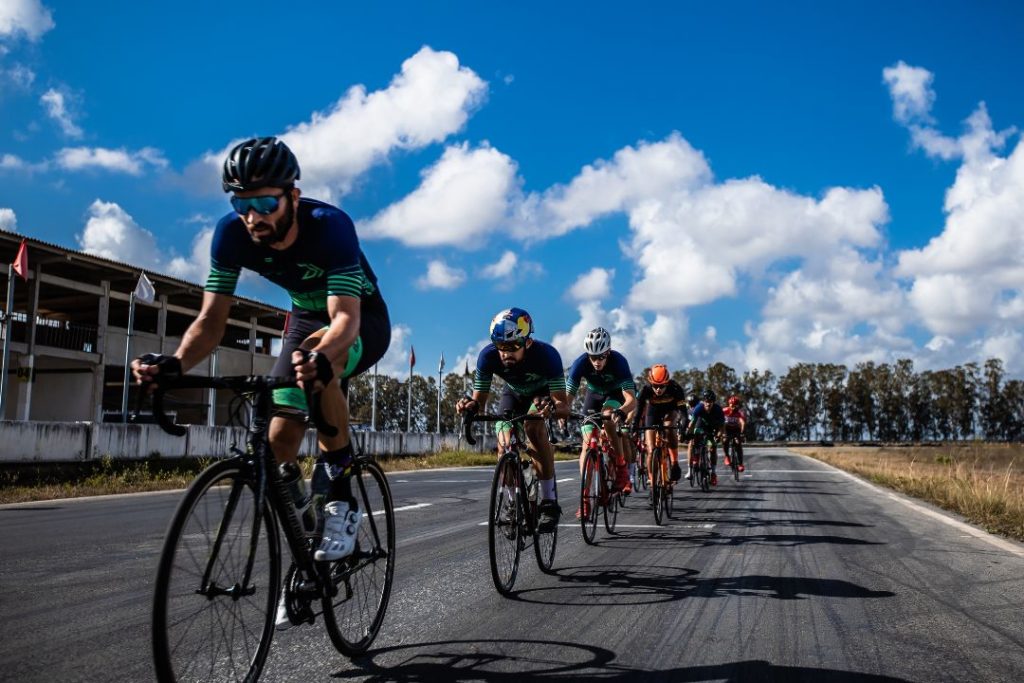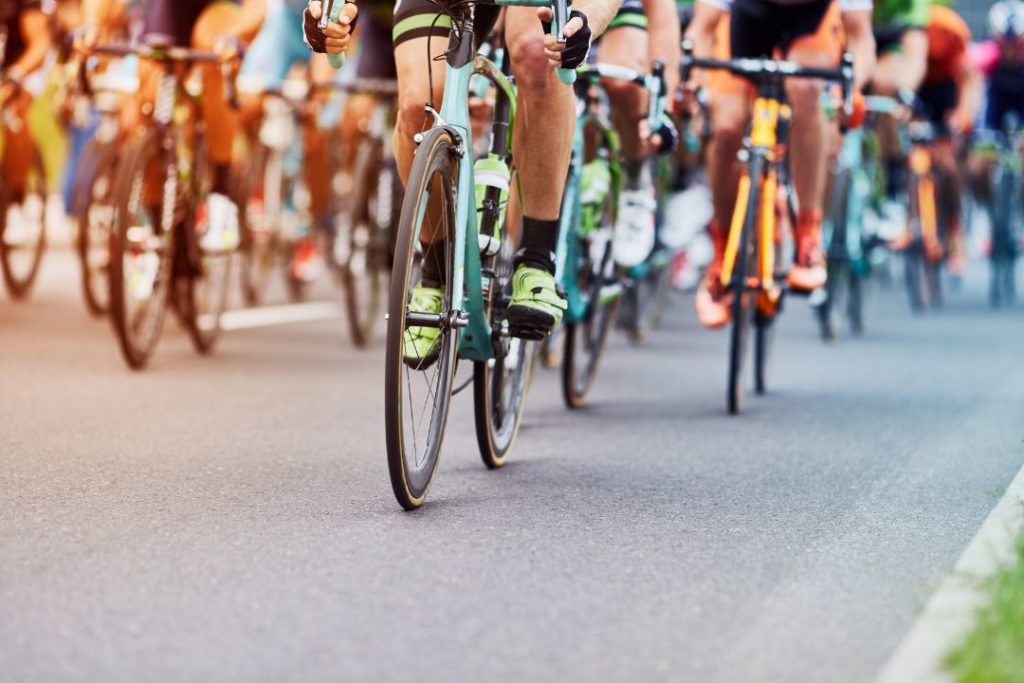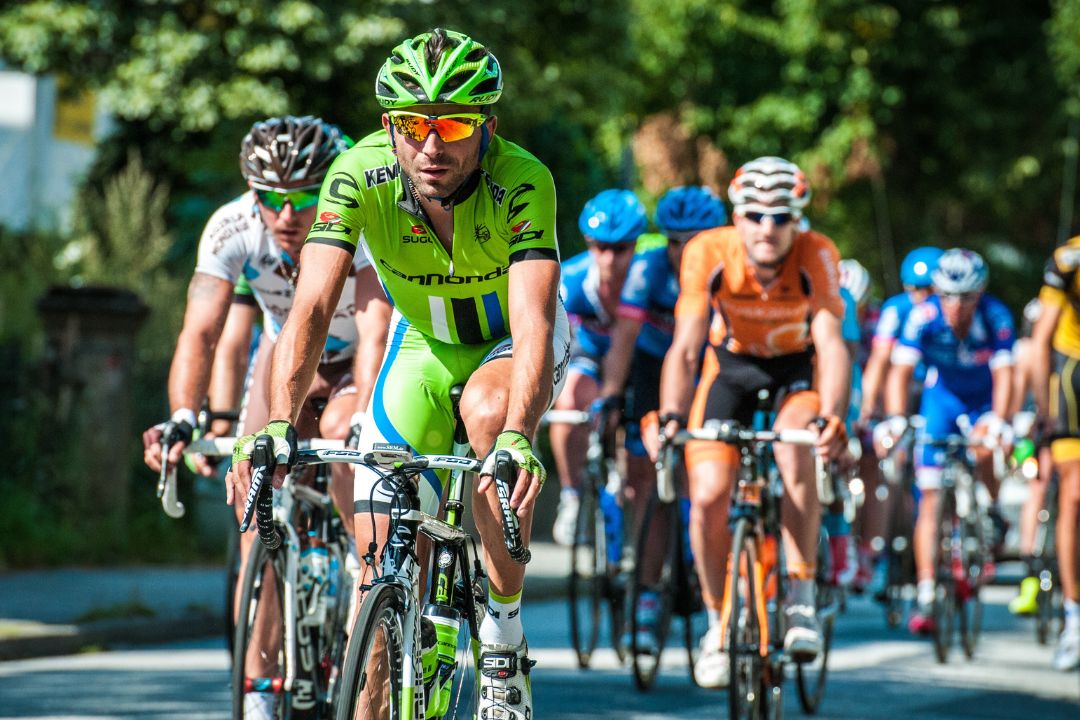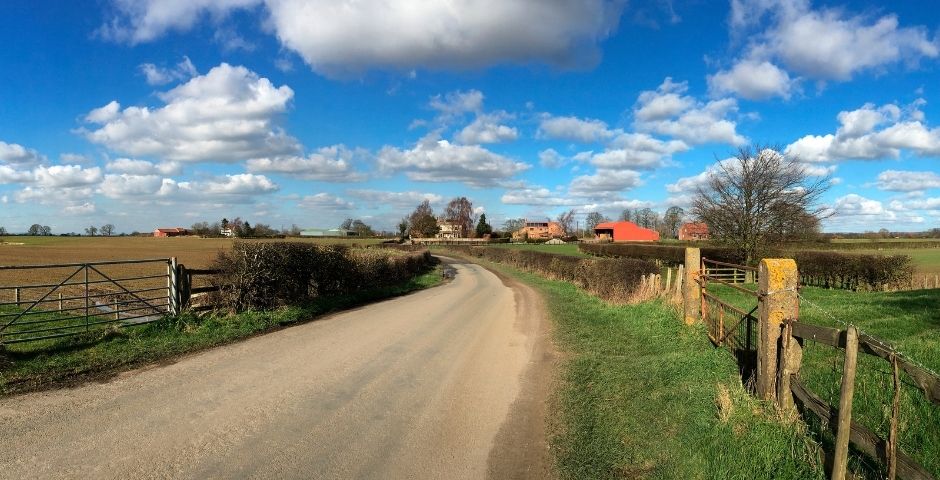Peloton cycling, a common practice in competitions and group rides, is both an art and a science. Riding in a peloton requires physical skill and a thorough understanding of the tactics and strategies that make a rider more efficient and safe in this unique environment.
Understanding peloton dynamics
At the heart of group cycling is the peloton, a complex and fluid formation where each rider plays a crucial role. Understanding peloton dynamics is the first key to riding better and more efficiently. A peloton is not just a group of riders riding together; it is an entity that moves and reacts as one.
By understanding how the group behaves, you can anticipate changes of pace, slowdowns and accelerations. It is vital to be aware of the movements of riders a few positions ahead, as well as the rider in front of you. This anticipation allows you to adjust your effort and position more smoothly, avoiding sudden braking or unnecessary accelerations that waste valuable energy.
Effective positioning in the bunch
A crucial factor in riding successfully in a peloton is the ability to position oneself effectively within the group. This positioning affects not only aerodynamic efficiency and energy expenditure, but also the ability to react to changes and unforeseen situations.
Riding close to the front, but without constantly assuming the leading position, offers an optimal combination of visibility, wind protection and anticipation. In this position, you can better observe and respond to the dynamics of the peloton, including changes in direction, pace and strategy.
In addition, by avoiding being at the rear, you minimise the accordion effect, which involves frequent speed changes and increases the risk of collisions. However, the art of positioning yourself correctly in the peloton also involves constant adjustment based on the conditions of the race, the terrain and the fatigue of both yourself and other riders.
Staying aware of these factors and proactively adjusting position is essential to maximise performance and safety within the group. Experience and continued practice are key to developing this skill, allowing riders to efficiently navigate through the dynamic peloton environment.

Communication and signalling between cyclists
Effective communication and signalling between cyclists is a fundamental pillar of safety and the smooth functioning of the peloton. Hand gestures and verbal signals are crucial tools for warning of road hazards, changes in direction, or adjustments in speed. These signals must be clear and consistent, allowing all members of the peloton to react in a coordinated manner and avoid accidents.
In addition to standard signals, cyclists should also be aware of non-verbal cues from fellow cyclists, such as changes in posture or pedalling cadence, which can anticipate movements within the group. Effective communication not only improves safety, but also reinforces cohesion and teamwork, which are essential for optimal performance in the peloton.
Techniques for making the most of drafting
Drafting is an essential technique for riding better in a peloton. This practice allows you to save a significant amount of energy by reducing wind resistance. By riding close to another rider, preferably within a few centimetres of them, you can reduce your effort by up to 30%.
However, drafting requires skill and confidence. It is essential to keep a safe distance and to always be alert to the movements of the cyclist in front of you. In addition, it is important to rotate in leading the group to share the effort and not overload the cyclists in front.
Energy and pace management over long distances
Riding in a peloton is not only about physical technique, but also about the intelligent management of your energy. It is crucial to understand when it is time to push yourself and when to conserve energy. Over long distances, maintaining a steady pace and avoiding unnecessary exertion is key to optimal performance.
This means keeping up with the pace of the peloton, but also knowing your own limits and not getting carried away by the emotion of the moment. Energy management also includes proper nutrition and hydration, which are crucial to maintaining consistent performance throughout the race or training.

A key study highlighting the importance of proper nutrition in athlete performance is “Achieving an Optimal Fat Loss Phase in Resistance-Trained Athletes: A Narrative Review” by Carlos Ruiz-Castellano, Sergio Espinar, et al (2021). This study, conducted at institutions such as the Catholic University of Murcia and the University of Alicante, highlights the need for balanced protein and carbohydrate intake, as well as careful management of caloric intake to maximise performance and recovery. In cycling, this involves adapting nutrition to the physical demands of the peloton, maintaining a balance that allows both efficiency in energy use and the ability to sustain prolonged efforts.
With these keys, you can ride better in a peloton, making the most of the advantages of this form of cycling by improving efficiency and your enjoyment of the sport. If you want to simulate, as far as possible, what it would be like to train in the middle of a peloton, you can do so with a simulator such as BKOOL.
BKOOL is the most complete cycling simulator on the market, try it FREE for 7 days!
 Go to BKOOL
Go to BKOOL





